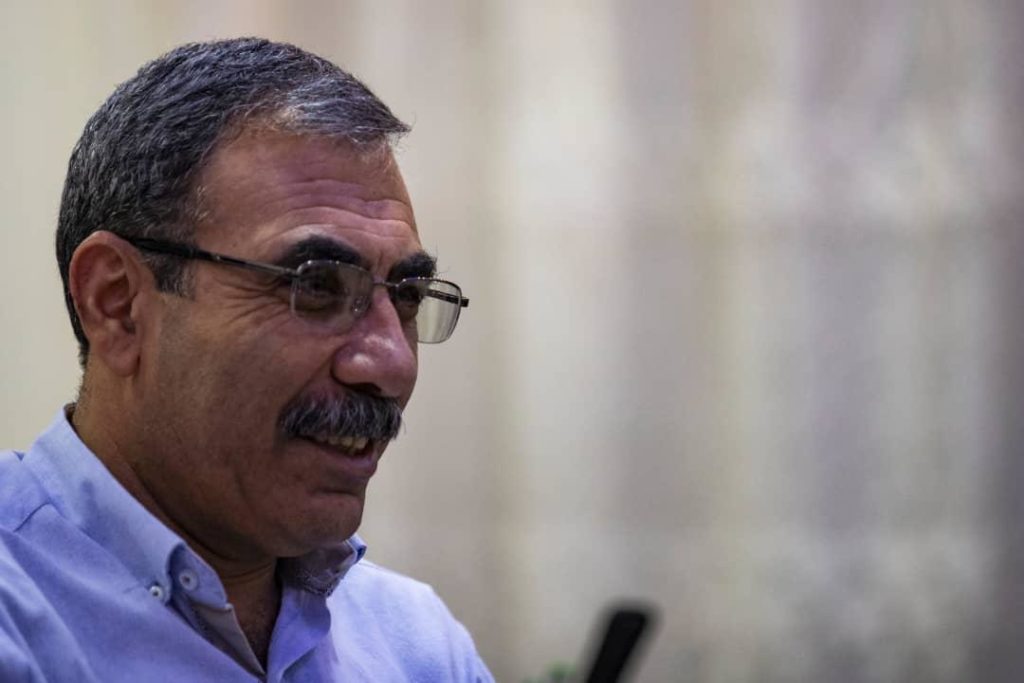QAMISHLI, Syria – A redeployment of U.S. Special Operations Forces in northeast Syria to local oilfields will do little to prevent a potential future expansion of Turkey’s incursion into the country’s northeast to fight the predominantly-Kurdish People’s Protection Units (YPG), a senior northeast Syrian official has said.
U.S. military officials informed the Syrian Democratic Forces’ leadership earlier this month where exactly American troops will be operating after the Trump administration partially reversed its withdrawal from northeast Syria so that American forces could guard the area’s oil wells.
“They called us and assured they will be located between Derik and Terbespiya,” said Aldar Xelil, senior foreign affairs official with the TEV-DEM political movement.
“At the oil wells at Terbespiya … and at Hasakah, Shadadi and Deir Ezzor,” Xelil told The Defense Post.
“As for Qamilshli and westward, the Americans have no intent to stay there,” he said, adding that U.S. military positions around the oil wells will do nothing to deter a widening of Turkey’s incursion.
The redeployment of U.S. troops to the oil wells may buy time for the survival of the SDF and the self-declared Autonomous Administration of North and East Syria, which relies on selling the petroleum to fund itself.
But the redeployment also leaves a gap of more than 100 km between Turkey-backed rebels outside the frontline town of Tel Tamer and U.S. positions east of of Qamishli.
Turkey launched an invasion of northeast Syria between the border towns of Ras al-Ayn and Tal Abyad on October 9 after the White House announced U.S. forces would withdraw from that area and that Ankara’s promised attack would commence.
Turkey accuses the YPG of being an arm of the Kurdistan Workers’ Party (PKK), which has waged a decades-long insurgency inside Turkey.
But the U.S.-led Coalition against Islamic State has armed, trained and advised the YPG-led SDF as the primary partner force on the ground against ISIS in Syria.
Xelil and other northeast Syrian Kurdish officials have distanced the YPG from the PKK, insisting their forces pose no threat to Turkey. But U.S. officials have made clear that the relationship with the SDF, which is led by the YPG, is temporary and was limited to fighting Islamic State.
Turkey’s incursion, spearheaded on the ground by Syrian Arab rebels, has killed hundreds and displaced more than 200,000 people. The Turkey-backed rebels have been implicated in a number of war crimes.
Turkey’s President Recep Tayyip Erdogan has repeatedly said his country will resettle up to three million Syrian refugees, most of them Arab, into the border zone, which is home to most of Syria’s Kurdish population.
U.S. State Department officials told their Turkish counterparts months in advance that American forces would get out of the way if Ankara chose to attack elements of the Syrian Democratic Forces, the primary Syrian partner force of the international Coalition against ISIS.
The U.S. refuses to strike Turkey’s forces to stop the incursion. The top State Department official responsible for Syria, James Jeffrey, told Congress last month that Trump administration intends to use sanctions and diplomatic leverage against Turkey instead to try to prevent further incursion.
“The oil wells are south of Derik. Does this mean if Derik is exposed to attack, they won’t defend it? This is a risk,” Xelil said, adding that U.S. officials informed them of Turkey’s general attack plan.
“The first phase was to be Ras al-Ayn to Tal Abyad,” he said. The second phase was said to be an incursion spanning Kobani to Manbij, and the third phase from Ras al-Ayn to Derik, Xelil said.
“Now the Russians are present in some of these areas. But of course we fear Erdogan may do something else in these areas,” he said, citing the example of the Kurdish region of Afrin, which Turkey invaded in 2018, possibly with Russia’s permission.
Limited fighting has continued outside of Tel Tamer, southeast of Ras al-Ayn, despite a supposed ceasefire announced by the U.S. and Turkey in late October.
The SDF resumed joint operations with the U.S. against ISIS sleeper cells shortly after the phone call about the troop redeployment, he told The Defense Post.
“The Pentagon’s position is good,” Xelil said, adding, “the problem is the State Department.”



